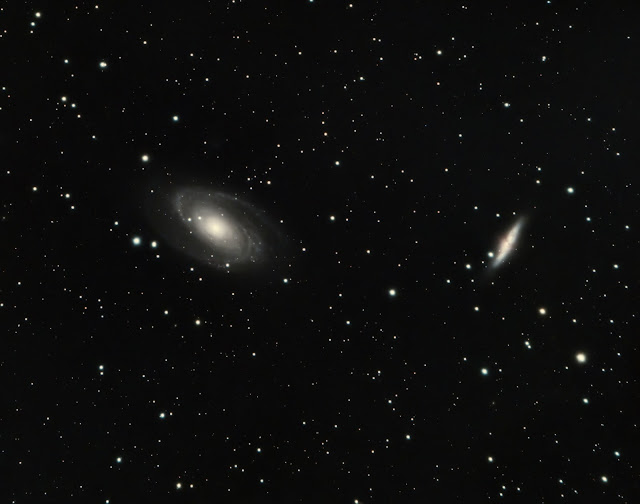About
Here are all Capture Details for this extensive project!
IC443 lies on the foot of one of the twins of the constellation Gemini, Castor between the bright stars Tejat and Propus.
 |
| Image courtesy of Stellarium |
Both Ha and Sii have wavelengths in the Red spectrum while Oiii is aligned to the Blue spectrum.
Some Light Science
The Jellyfish Nebula, or (Index Catalogue) IC 443, is the remnant of a supernova lying a relatively close distance in astronomical terms of 5,000 light years from Earth. IC 443 may be the remains of a supernova that occurred 3,000 - 30,000 years ago. IC 443 is one of the best-studied cases of supernova remnants interacting with surrounding molecular clouds. IC 444 is a nebulous region near Tejat or μ Gem
SHO
Commonly known as the Hubble Palette where Siii is mapped the the Red channel; Ha to the Green channel; Oiii to the Blue channel.
SHO w/ RGB Stars
HOO
Ha to Red; Oiii to both Green and Blue
Ha
68 exposures @ 180" (3h 24')
Oiii
78 exposures @ 300" (6h 30')
Sii
30 exposures @ 300" (2h 30')











No comments:
Post a Comment